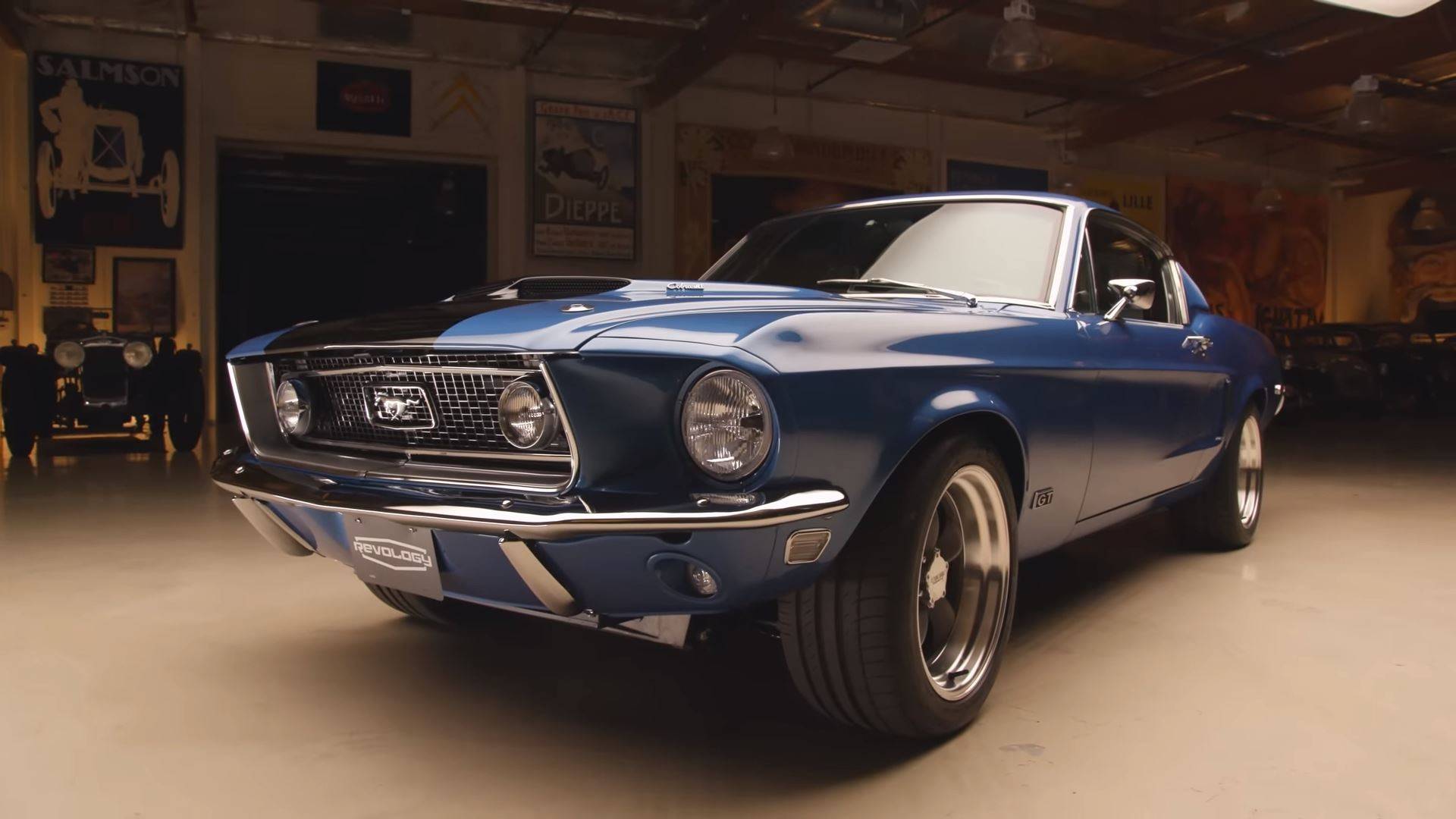Every car enthusiast appreciates a good sleeper car. While flashy designs and roaring engines can be exciting, there’s something special about a low-key car that surprises everyone with its performance.
In the 1980s, as the U.S. car market adapted to new regulations, changing consumer preferences, and a surge of foreign models, sleeper cars often emerged from unexpected places. These cars might have looked ordinary on the outside, but they packed serious power under the hood. Here are 10 of the rarest sleeper cars from the ’80s, each with fewer than 1,000 units made. The specs come directly from manufacturers, and the original and current average prices are based on trusted sources like Hagerty, Hemmings. The research was done in September 2024.
9) 1980 Oldsmobile Cutlass Calais 442 A Forgotten Muscle Car Revival
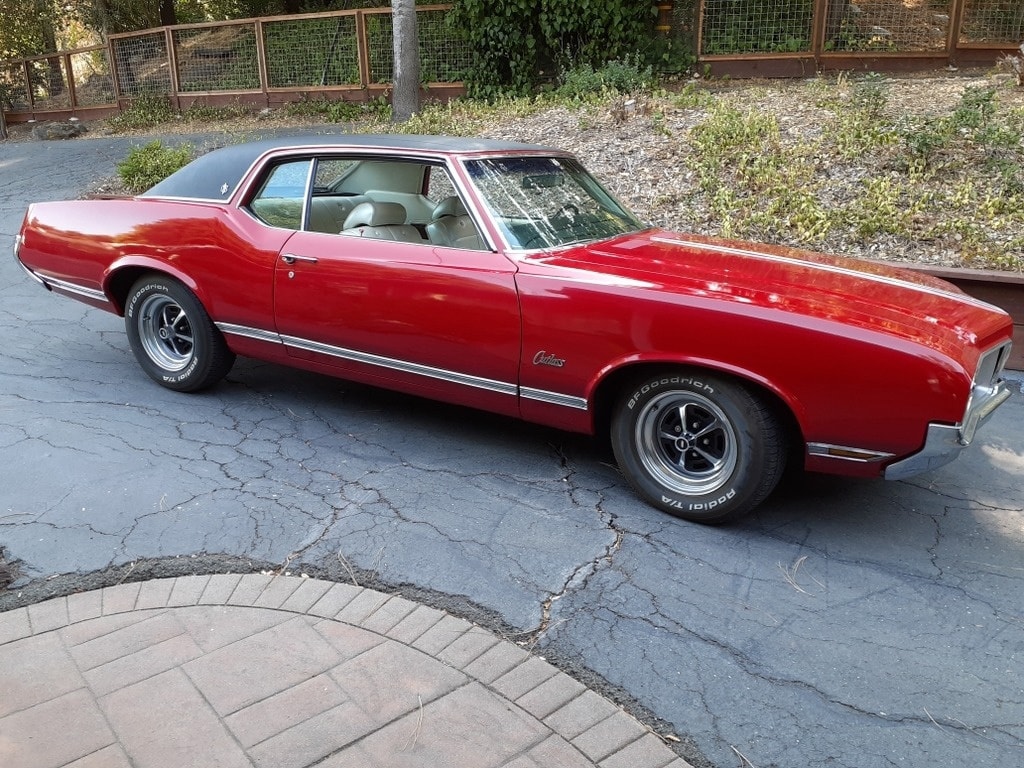
The Oldsmobile Cutlass wasn’t always a sleeper. In the 1960s, the 442 model packed serious power with its 400ci Rocket V8 engine, delivering 345 horsepower and 440 lb-ft of torque. But by the 1970s, the once-powerful Cutlass had turned into a heavy, underperforming car with weaker V6 engines.
In 1980, Oldsmobile decided to bring back some of its former glory. They introduced the Cutlass Calais trim as a performance model, offering a 5.7L Rocket V8 engine. This engine produced 170 horsepower and an impressive 275 lb-ft of torque, a major improvement compared to the previous years. To add some extra flair, the W-30 performance package was available, featuring fiberglass elements that lightened the car and enhanced its performance.
Despite these upgrades, only 886 units of the 1980 Cutlass Calais 442 were made, making it a rare gem for collectors today. Originally priced at $6,919.57, the current market value has soared to around $18,225, proving that the 1980 Calais 442 is a piece of muscle car history worth remembering.
The Oldsmobile Cutlass Calais 442 is a noteworthy entry in the history of American muscle cars, representing the brand’s efforts to combine performance with the practicality of a compact car. Launched in the 1980s, the Cutlass Calais 442 was part of the larger Cutlass family, which had been a staple of Oldsmobile’s lineup since the 1960s.
The Calais variant, specifically, aimed to cater to a younger audience looking for a sporty, compact vehicle with the performance credentials to back it up. With a blend of stylish design, a potent engine, and a focus on delivering a thrilling driving experience, the Cutlass Calais 442 quickly gained a reputation as a fun and spirited ride.
The Cutlass Calais itself debuted in 1985 as a replacement for the Oldsmobile Cutlass Supreme and was positioned as a compact car with a sporty flair. The 442 designation, traditionally associated with high-performance Oldsmobile models, was revived in this compact format to signify the car’s performance orientation.
Unlike the classic 442 models of the 1960s and 1970s, which were often large muscle cars with massive V8 engines, the Cutlass Calais 442 represented a shift in the market towards smaller, more efficient vehicles. It still aimed to provide an engaging driving experience, making it a unique offering in the era of rising fuel prices and changing consumer preferences.
Under the hood, the Cutlass Calais 442 featured a 4.3-liter V6 engine, a departure from the larger V8 engines of its predecessors. This engine was designed to balance performance with fuel efficiency, reflecting the market’s growing demand for more economical options.
The V6 produced around 200 horsepower, which was respectable for a compact car of its time. The engine was paired with a four-speed automatic transmission, which provided smooth shifts and helped maximize fuel efficiency. Despite the smaller engine size, the Cutlass Calais 442 still offered spirited acceleration and a lively driving experience, especially in comparison to its competitors in the compact market.
One of the standout features of the Cutlass Calais 442 was its sporty suspension tuning. The car came equipped with performance-oriented suspension components that enhanced its handling and ride quality.
This allowed the Calais 442 to tackle corners with confidence and provided a fun, engaging driving experience. The combination of a firm suspension and responsive steering made it feel nimble and agile, characteristics that appealed to those looking for a sporty compact car. Additionally, the availability of features like front disc brakes and alloy wheels further enhanced its performance credentials, setting it apart from other compact vehicles of the time.
Aesthetically, the Oldsmobile Cutlass Calais 442 had a distinctive design that reflected the sporty nature of the model. It featured a sleek profile, aggressive front fascia, and bold body lines that contributed to its athletic appearance.
The 442 model was often distinguished by unique badging, including the classic “442” emblem that harkened back to the original muscle car heritage. Available in various colors and trim levels, the Calais 442 appealed to buyers looking for a stylish and sporty compact vehicle. Inside, the cabin offered a driver-focused layout with supportive seats and a well-designed dashboard that prioritized comfort and functionality.
The interior of the Cutlass Calais 442 was designed with a sporty aesthetic, incorporating features that added to the overall driving experience. The seats were often upholstered in a combination of fabric and vinyl, providing both comfort and durability.
Drivers appreciated the sporty steering wheel, which offered a firm grip and added to the car’s performance-oriented feel. Technology in the Calais 442 was relatively advanced for its time, with options such as a premium audio system, power windows, and air conditioning, ensuring a comfortable ride for both driver and passengers.
The Oldsmobile Cutlass Calais 442 was well-received during its production run, as it filled a niche for compact performance cars at a time when the market was shifting toward smaller vehicles. Enthusiasts appreciated its blend of sporty design, decent performance, and everyday usability.
Although it didn’t capture the same level of attention as some of the classic muscle cars, the Calais 442 still garnered a dedicated following among those who valued its unique characteristics. The car’s relatively compact size made it easy to maneuver in urban settings, while its performance capabilities made it enjoyable for spirited driving on winding roads.
As the automotive continued to evolve through the late 1980s and early 1990s, the Oldsmobile Cutlass Calais 442 began to face increased competition from newer entrants in the compact performance segment.
The rise of imports and advancements in automotive technology led to shifts in consumer preferences. While the Calais 442 offered solid performance and a unique position within the Oldsmobile lineup, it ultimately struggled to maintain its market presence in the face of changing trends. The combination of rising fuel economy standards and the growing popularity of sport compacts from manufacturers like Honda and Toyota contributed to the eventual decline of the Cutlass line.
Production of the Cutlass Calais 442 ceased in the early 1990s, marking the end of an era for this distinctive model. However, the legacy of the Cutlass Calais 442 lives on among collectors and automotive enthusiasts who appreciate its unique combination of compact practicality and sporty performance. Today, well-preserved examples of the Cutlass Calais 442 are sought after in the classic car market, appreciated for their nostalgic value and the fun driving experience they offer.
The Oldsmobile Cutlass Calais 442 represents an interesting chapter in the history of American performance cars. It showcased Oldsmobile’s ability to adapt to changing market demands while still honoring its performance heritage.
While it may not have achieved the legendary status of its predecessors, the Cutlass Calais 442 remains a testament to the brand’s innovative spirit and willingness to explore new avenues in the automotive. For enthusiasts who value the history of performance vehicles, the Cutlass Calais 442 stands out as a unique and memorable option from a bygone era.
8) 1985 TVR Tasmin 280i A Rare Sleeper from the ’80s
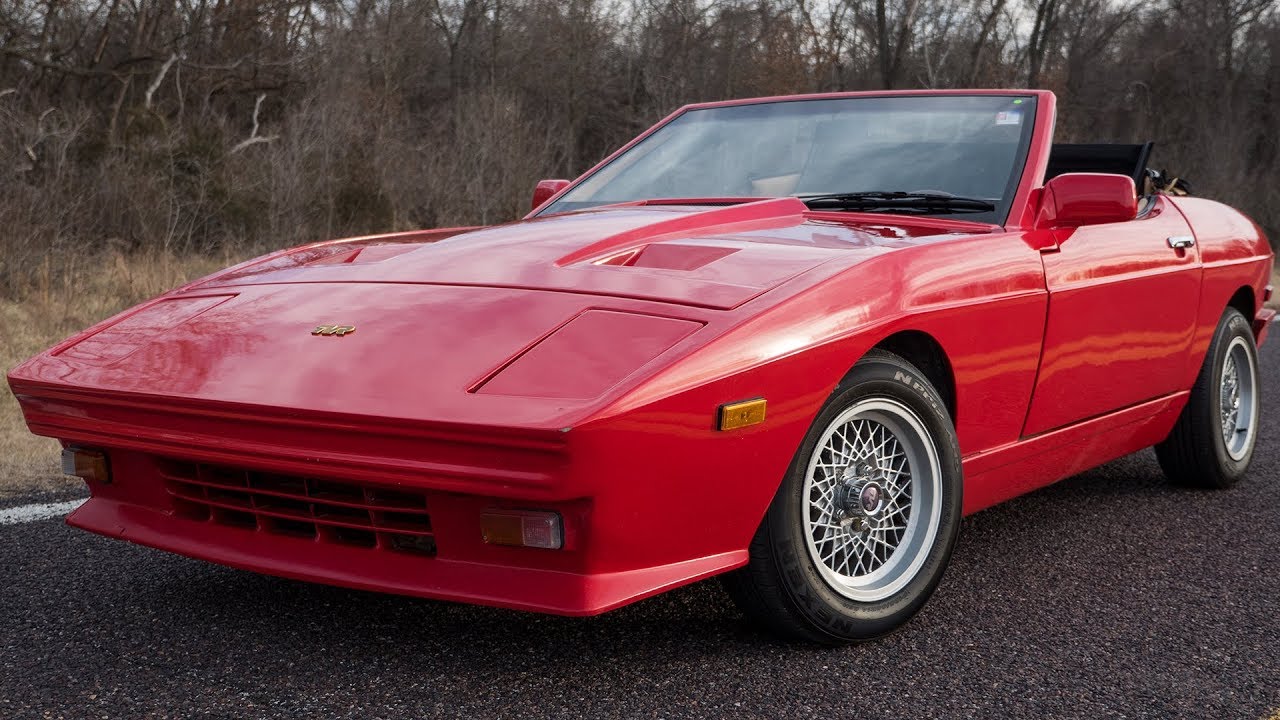
The 1985 TVR Tasmin 280i might look like a low-key sports car or even a stylish hot hatch, but it packed much more power than most people expected. With a Ford Cologne 2.8L V6 engine under the hood, it delivered 160 horsepower and 150 lb-ft of torque. This performance outshined popular models of the time, like the 1985 VW Golf GTI and the first-generation Mazda MX-5.
At 160 hp, the Tasmin 280i matched the performance of pricier cars like the 1989 Lotus Elan, but it came at a much lower cost. Originally priced at $25,000, it was $8,000 cheaper than the Elan.
However, despite its impressive specs, the TVR Tasmin 280i was overshadowed by the popularity of mainstream cars like the Golf and Miata. This led to the car being somewhat overlooked during its production run from 1983 to 1987, with only 1,167 units ever built. Today, the 280i is a rare find, and collectors can pick one up for around $8,500. For fans of unique and powerful ’80s sleepers, this TVR remains an exciting option.
The TVR Tasmin 280i is a notable entry in the British sports car manufacturer’s lineup, embodying the essence of 1980s motoring with its distinctive design and spirited performance. Launched in 1982, the Tasmin was aimed at a market looking for an affordable yet exhilarating sports car.
It was part of TVR’s efforts to broaden its appeal and reach a wider audience while still retaining the brand’s core values of performance and driving enjoyment. The 280i variant specifically offered a balance of power, style, and everyday usability that appealed to a range of enthusiasts.
At the heart of the Tasmin 280i is a 2.8-liter V6 engine sourced from Ford, which was a departure from the brand’s usual reliance on larger, more powerful V8 engines. This decision was made to meet the demands of a changing market, where fuel efficiency and manageable performance were becoming increasingly important.
The engine produced around 140 horsepower, which, combined with the car’s lightweight fiberglass body, provided a sprightly performance characteristic of TVR’s offerings. The 280i was capable of accelerating from 0 to 60 mph in just over 6 seconds, making it competitive with other sports cars of the era.
The design of the Tasmin 280i is one of its most distinctive features. The car showcased the signature TVR styling, with its sleek lines, wide stance, and aggressive front end. The fiberglass bodywork not only contributed to the car’s lightweight structure but also allowed for unique design elements that set
it apart from competitors. The distinctive pop-up headlights added a touch of flair and helped enhance the aerodynamics of the vehicle. The Tasmin’s overall aesthetic appealed to enthusiasts looking for a car that looked as exciting as it was to drive.
Inside, the TVR Tasmin 280i offered a driver-focused cockpit that emphasized simplicity and functionality. The dashboard was laid out to provide essential information at a glance, with analog gauges that conveyed the car’s performance metrics.
The interior materials were a mix of leather and vinyl, providing a comfortable yet utilitarian environment. While the focus was primarily on driving enjoyment, the Tasmin still offered basic creature comforts such as optional air conditioning and a decent sound system. The overall experience behind the wheel was engaging, allowing drivers to feel connected to the road and the car’s performance.
The handling characteristics of the Tasmin 280i were a highlight, showcasing TVR’s commitment to delivering an engaging driving experience. The car featured a rear-wheel-drive layout, which provided excellent balance and agility.
Coupled with independent suspension at both the front and rear, the Tasmin could tackle corners with confidence, offering precise steering feedback and minimal body roll. The lightweight construction of the vehicle contributed to its nimbleness, making it a joy to drive on winding roads or racetracks. This focus on handling set the Tasmin apart from many other sports cars of the era, which often prioritized straight-line speed over cornering prowess.
Despite its strong performance credentials, the Tasmin 280i was not without its challenges. The reliability of early TVR models was sometimes questioned, with some owners reporting issues related to build quality and components.
However, many enthusiasts embraced the character and charm of the Tasmin, viewing it as a raw and unfiltered sports car experience. The relatively low production numbers also added to the car’s exclusivity, making it a rare find today. Enthusiasts appreciate the quirks and idiosyncrasies of the brand, which contribute to the allure of owning a TVR.
During its production run, the Tasmin 280i found its place in a competitive market filled with other British sports cars, such as the Lotus Elan and the MG F. However, it carved out a niche for itself, appealing to drivers who sought a unique driving experience with a touch of flair.
The combination of performance, distinctive styling, and the cachet of the TVR brand made the 280i an attractive option for sports car enthusiasts of the time. It also served as an entry point for those looking to experience the thrill of driving a TVR without the higher price tags associated with larger and more powerful models.
As the automotive wevolved in the late 1980s, the Tasmin would eventually be succeeded by newer models as TVR sought to keep up with changing consumer preferences and emissions regulations. The TVR Griffith and other models would continue the brand’s legacy of performance and character, but the Tasmin 280i remains a beloved classic among fans of the marque. Today, it’s recognized as a significant part of TVR’s history, representing a time when the company was pushing the boundaries of what a sports car could be.
The TVR Tasmin 280i holds a special place in the hearts of automotive enthusiasts. With its distinctive design, spirited performance, and engaging driving dynamics, it captures the essence of what a British sports car should be. While it may not have achieved the same level of fame as some of its contemporaries, the Tasmin 280i remains a testament to TVR’s commitment to delivering an exhilarating driving experience.
For those lucky enough to encounter one today, the Tasmin offers a bygone era of motoring, where the joy of driving was paramount, and performance was more than just a number on a spec sheet. The legacy of the Tasmin 280i continues to inspire a new generation of enthusiasts who appreciate the unique blend of performance, style, and character that defines the TVR brand.
7) 1983 Ford Mustang GT Turbo A Rare Turbocharged Pony
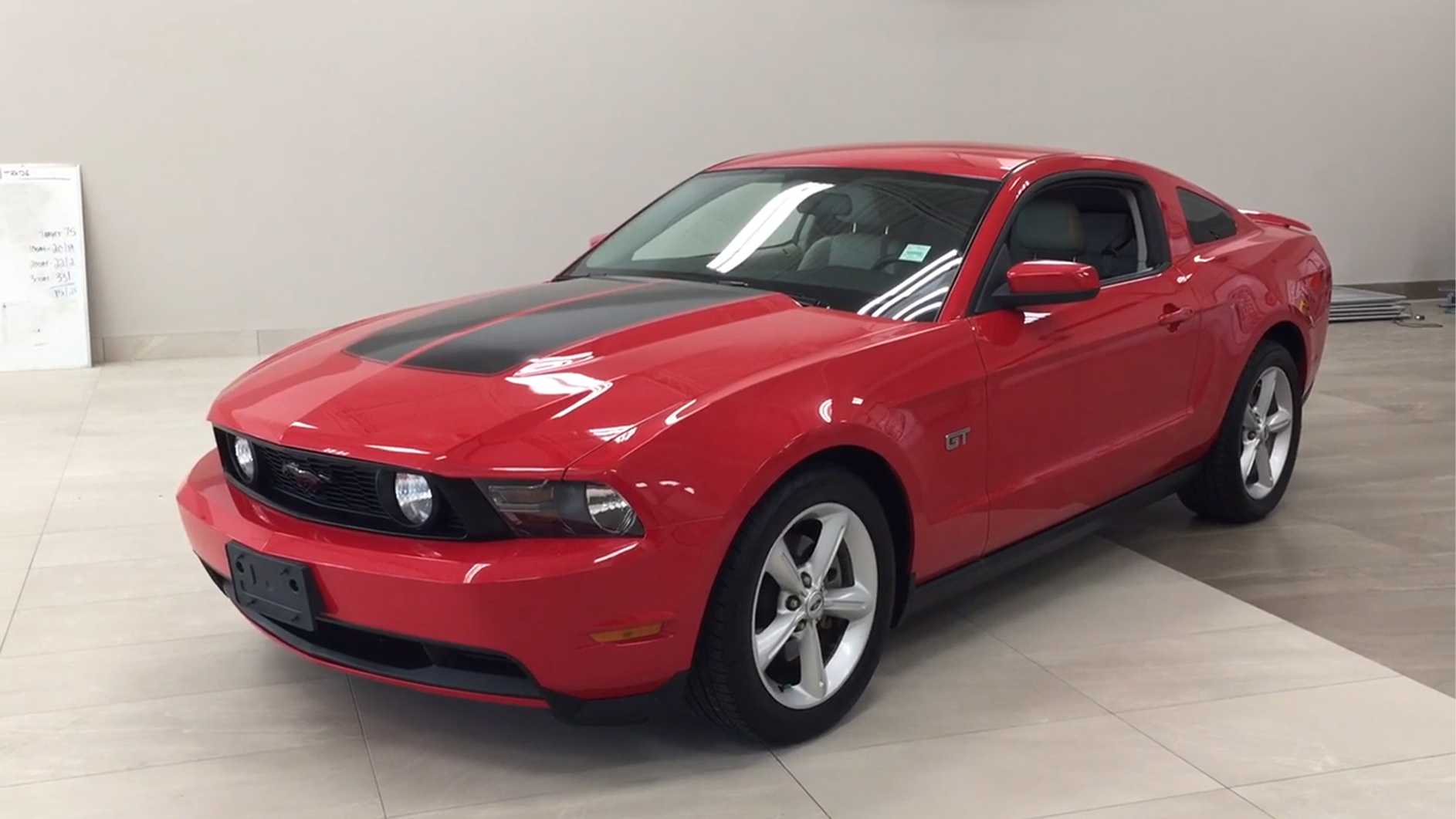
The 1980s were a challenging time for the Ford Mustang. Known for its power and performance in the past, the Mustang of the ’80s lost much of its former glory. To compensate, Ford tried to mask the decline in performance with flashy, aggressive designs typical of the era, but it didn’t quite work.
Among the many Mustangs produced in 1983, the GT Turbo was one of the few attempts to bring some power back to the lineup. It featured a turbocharged 2.3L four-cylinder engine that delivered 145 horsepower and 180 lb-ft of torque. While respectable for its time, it wasn’t the thrilling performance that Mustang fans had come to expect.
Despite being a capable car, the GT Turbo wasn’t popular, with only 556 units produced out of the 120,000 Mustangs that year. This low production number makes it a rare find today, and its original price of $10,088 has increased to around $14,498 in today’s market. Though it didn’t capture the hearts of enthusiasts back then, the 1983 Ford Mustang GT Turbo is now a sought-after collectible for those who appreciate its uniqueness.
The Ford Mustang GT is a timeless symbol of American muscle, embodying power, performance, and style in a package that has grabbed car enthusiasts for generations.
The GT variant of the Mustang, specifically, takes the already iconic car to another level by offering a more powerful engine, upgraded handling dynamics, and an aggressive design that screams performance. First introduced in 1965 as part of the first-generation Mustang lineup, the GT badge has come to signify enhanced driving thrills, making it one of the most desirable trims within the Mustang family.
At the heart of the Mustang GT lies its potent engine, which has always been the focal point of this variant. The modern Ford Mustang GT is powered by a 5.0-liter V8 engine that churns out a robust 450 horsepower and 410 lb-ft of torque in its current iteration.
This naturally aspirated powerhouse provides exhilarating acceleration and a thrilling exhaust note that has become synonymous with the Mustang experience. The combination of raw power and a rear-wheel-drive layout ensures that the GT offers a pure, unfiltered driving experience, appealing to those who crave a sense of connection between the car and the road.
One of the most notable features of the Mustang GT is its performance capabilities. The V8 engine propels the car from 0 to 60 mph in around 4 seconds, depending on the configuration, making it a serious contender in the sports car segment.
Whether you opt for the standard six-speed manual transmission, which offers a more visceral driving experience, or the 10-speed automatic, the Mustang GT is designed to deliver thrilling performance in a variety of driving conditions. The manual transmission, in particular, adds an extra layer of engagement for purists who want to be fully immersed in the driving process.
Beyond straight-line speed, the Mustang GT has undergone significant improvements in handling and chassis dynamics, particularly with the introduction of independent rear suspension. Previous generations of the Mustang were often criticized for their live rear axle setup, which could compromise handling on twisty roads or uneven surfaces.
However, the switch to independent suspension has transformed the Mustang GT into a more refined and composed sports car, capable of tackling corners with confidence and stability. The car remains planted during high-speed maneuvers, offering precise steering feedback and minimal body roll, which elevates the driving experience beyond just straight-line power.
The Ford Mustang GT’s design is an essential part of its allure. The modern GT retains the classic long hood and short rear deck proportions that have defined the Mustang since its inception, but with a more aggressive and aerodynamic look. The front fascia is dominated by a bold grille and sharp LED headlights, giving the car an unmistakable presence on the road.
The muscular lines along the sides and the pronounced haunches over the rear wheels enhance the car’s athletic stance, while the signature tri-bar taillights pay homage to its heritage. Additionally, the available performance packages add even more visual flair, with options like larger wheels, rear spoilers, and unique badging that set the GT apart from its lesser Mustang siblings.
The interior of the Mustang GT is a blend of modern technology and retro-inspired design. The driver-centric cabin features a range of materials that enhance the premium feel, including available leather-trimmed seats, aluminum accents, and customizable digital displays.
The dashboard design is clean and functional, with an intuitive layout that places all controls within easy reach of the driver. One of the standout features is the 12-inch fully digital instrument cluster, which can be personalized to display different driving modes, performance data, and more. This adds a modern touch to the Mustang’s cabin, while still retaining its classic charm.
In terms of technology and features, the Mustang GT comes well-equipped for a sports car. Ford’s SYNC 3 infotainment system is standard, offering a responsive touchscreen interface, Apple CarPlay, Android Auto, and optional navigation.
The system is easy to use and provides seamless smartphone integration, ensuring that drivers can stay connected without distraction. There’s also an available Bang & Olufsen premium sound system for audiophiles who want to enjoy high-quality audio while cruising. Despite its performance focus, the Mustang GT doesn’t skimp on comfort or convenience, making it suitable for both daily driving and spirited weekend outings.
The Ford Mustang GT also offers a variety of driving modes that allow drivers to tailor the car’s performance to their preferences. Normal, Sport, Track, and Drag Strip modes each adjust the throttle response, transmission settings, and steering weight to suit different driving scenarios.
Track mode, for instance, sharpens the car’s reflexes and enhances feedback, making it ideal for high-performance driving on a closed circuit. For those who want to extract the maximum performance from their Mustang GT, the optional Performance Package includes upgrades like Brembo brakes, a Torsen limited-slip differential, and additional cooling systems for the engine and brakes.
While the Mustang GT is undeniably performance-oriented, it also offers a surprising level of practicality. The rear seats are small, as is expected in a coupe, but they do fold down to expand the trunk space, making the car more versatile than some other sports cars.
The GT’s ride quality is also relatively comfortable for a car of its performance caliber, thanks to the adaptive suspension system, which adjusts the damping based on road conditions and driving style. This means that the Mustang GT can handle both aggressive driving and long-distance cruising with ease, making it a more versatile sports car than one might expect.
In terms of competition, the Ford Mustang GT faces rivals such as the Chevrolet Camaro SS and the Dodge Challenger R/T, both of which also offer V8 power and similar price points. However, the Mustang GT’s blend of performance, refinement, and heritage gives it a distinct edge. Its balanced handling, high-revving V8 engine, and iconic design make it one of the most well-rounded offerings in the muscle car segment. Moreover, the Mustang GT’s reputation as a daily-drivable sports car has earned it a loyal following, further solidifying its status as an automotive icon.
Yhe Ford Mustang GT represents the perfect blend of American muscle and modern performance. With its powerful V8 engine, improved handling dynamics, and unmistakable design, the GT continues to uphold the Mustang legacy while offering drivers a thrilling and engaging experience behind the wheel.
Whether you’re a longtime fan of the Mustang or new to the world of muscle cars, the GT delivers on all fronts, combining raw power with everyday usability in a way that few other cars can match. It remains a top choice for anyone seeking a sports car that delivers both excitement and practicality, while paying homage to its rich heritage.
6) 1986 Dodge Omni GLHS Turbo The Compact That Went Like Hell

In the mid-1980s, American muscle cars were struggling to stay relevant, but Carroll Shelby wasn’t ready to give up. He took the small, ordinary-looking Dodge Omni and transformed it into a compact powerhouse. The result was the 1986 Dodge Omni GLHS Turbo, which stood for “Goes Like Hell S’more.” Shelby built only 500 units, making this car a rare gem.
Under the hood was a 2.2-liter Turbo II engine, pushing out 175 horsepower and 175 lb-ft of torque. This may not sound like much compared to muscle cars of the past, but it was enough to beat cars like the Ferrari 308 and even Shelby’s own 1965 GT350 in a drag race. With a price tag of $11,000 when new, it offered a lot of performance for the money. Today, its value has increased to around $18,931, making it a sought-after piece of ’80s muscle car history.
5) 1987 Buick Regal GNX The Ultimate Sleeper Muscle Car
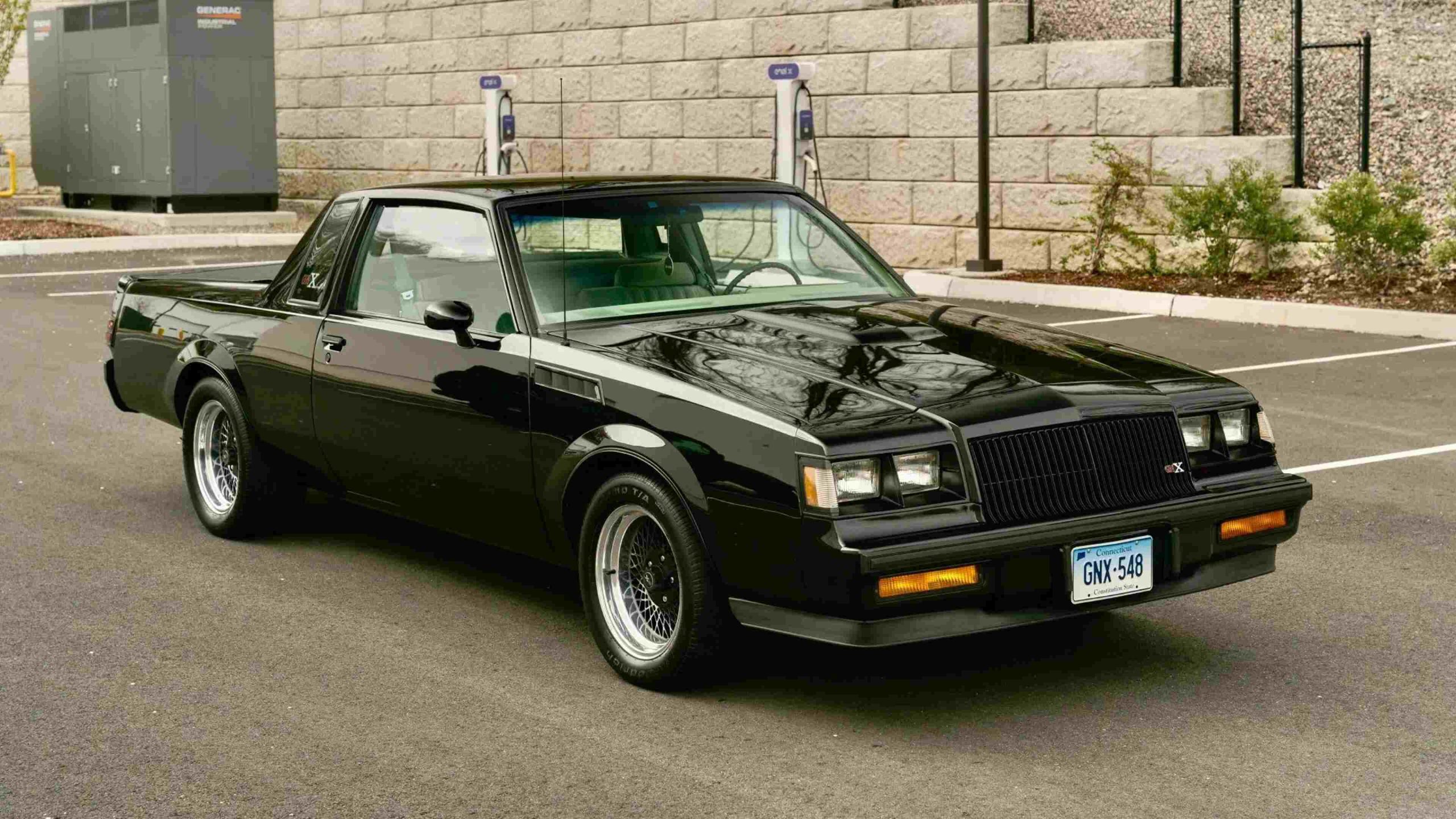
The 1980s weren’t the best years for American muscle cars, but Buick stepped up to change that with the 1987 Regal GNX. The Regal itself was a decent mid-size car, and its Grand National trim already offered solid performance. However, Buick wanted more than just “good enough,” so they handed the car over to McLaren for some serious upgrades.
Instead of using a traditional heavy V8 engine, McLaren tuned and turbocharged the Regal’s 3.8L V6, resulting in an impressive 276 horsepower and 360 lb-ft of torque. This made the GNX faster than the Corvette of its time and even the Mustang GT, which couldn’t match the GNX’s power despite its larger engine.
Buick only produced 547 units of the GNX, making it a rare and highly sought-after car today. Originally priced at around $29,389, these rare Buicks can now fetch over $107,000. The GNX stands as a symbol of how Buick helped keep the muscle car spirit alive during a tough era.
4) 1982 Ford Durango The Foxbody Truck You Didn’t Know About
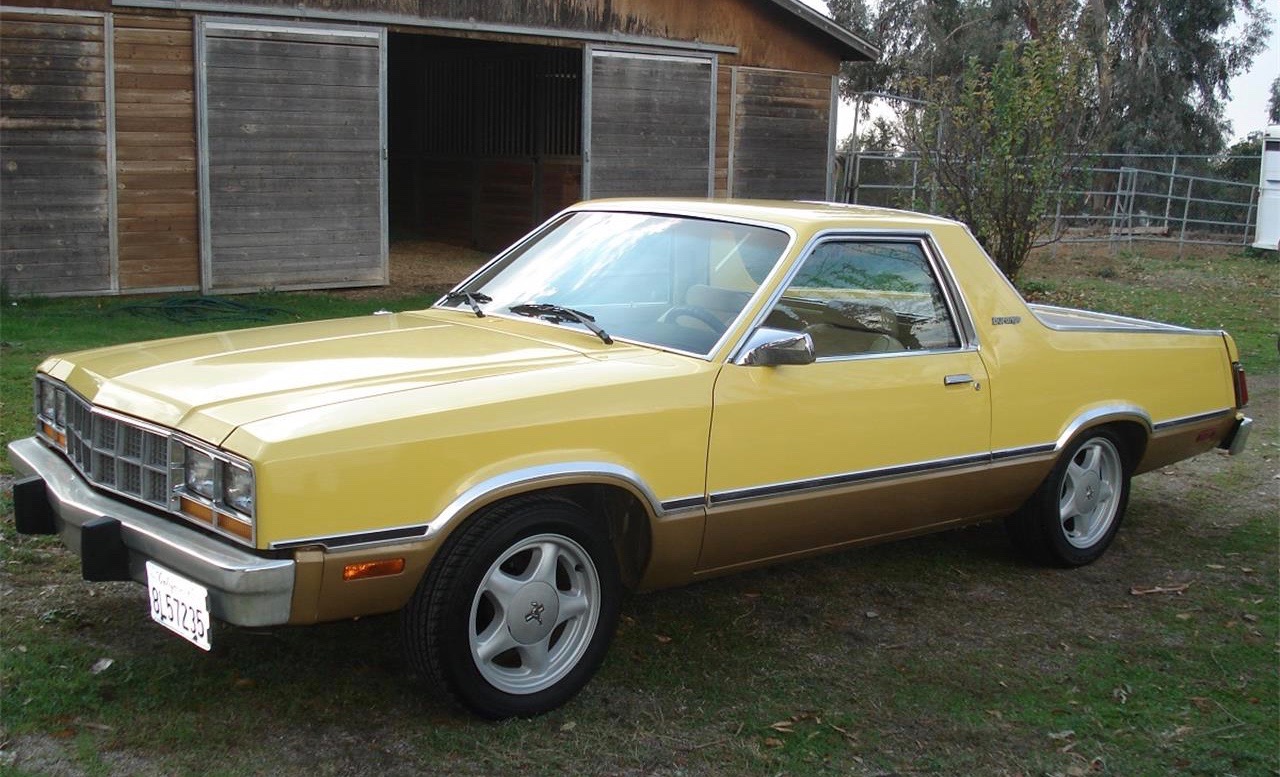
The 1982 Ford Durango is one of the rarest and most unusual vehicles to come out of Ford’s lineup in the early ’80s. After ending production of the popular Ranchero in 1979, Ford wanted to see if there was still a market for car-truck hybrids. Their answer was the Durango, a unique blend of a compact car and a utility vehicle, based on the Ford Fairmont.
This quirky vehicle was actually built by National Coach, not Ford directly, and was offered as a $2,500 upgrade option. The result was a limited-run car-truck crossover with a 3.3L inline-six engine, pushing 115 horsepower and 195 lb-ft of torque. Despite its versatility and decent power for the time, the Durango never really caught on. Only about 212 units were ever produced, making it a true hidden gem for collectors today.
Although it didn’t gain the same popularity as the Mustang or even the Fairmont it was based on, the Durango remains a cool piece of Ford history. Today, you might find one for around $6,500, making it an affordable option for enthusiasts who appreciate rare and offbeat vehicles.
3) 1989 Dodge Caravan Turbo The Minivan That Could Surprise You

The 1989 Dodge Caravan Turbo is a true sleeper car—one that doesn’t look fast but can surprise you with its power. With only around 400 units ever made, this minivan stands out not just for its rarity but for its quirky history. While minivans are usually built for family comfort, Chrysler had a unique problem in the late ’80s. Their standard engines were running low due to the high demand for their popular Dodge Caravan and Plymouth Voyager models.
In a bold move, Chrysler decided to put a turbocharged 2.5-liter engine into the Caravan, giving it 150 horsepower and 175 lb-ft of torque. This was way more power than most minivan buyers expected, making the Caravan Turbo a vehicle that could leave people surprised at a stoplight. However, not all customers were thrilled, as the turbo engine came with issues like turbo lag and performance that felt out of place for a family van.
Although it wasn’t perfect, the Caravan Turbo has become a favorite among sleeper car fans. It’s a minivan with a twist, capable of delivering a bit of performance in an unexpected package. Today, you can find one for around $9,075, a small price to pay for a fun piece of automotive history.
The Dodge Caravan Turbo, a unique and relatively rare variant of the popular Dodge Caravan minivan, was introduced in the late 1980s. The idea behind this turbocharged version was to provide a more powerful and engaging driving experience while maintaining the practicality and family-oriented design that made the Caravan a hit in the minivan market.
Although not widely known compared to the standard models, the Caravan Turbo is a fascinating chapter in Dodge’s history, blending the utility of a minivan with some unexpected performance characteristics.
Introduced during the 1989 model year, the Dodge Caravan Turbo was part of the second generation of the Dodge Caravan, which had already established itself as a leader in the growing minivan segment.
The turbocharged version stood out due to its performance-focused enhancements, which were uncommon for a vehicle designed primarily for family transport. This model featured a 2.5-liter turbocharged inline-four engine, which was borrowed from the performance-oriented Dodge Daytona Turbo and Chrysler’s Turbo II engine lineup.
The turbocharged engine produced 150 horsepower and 180 lb-ft of torque, which, while modest by today’s standards, was a significant increase over the naturally aspirated models of the time. This power boost gave the Caravan Turbo surprising acceleration for a minivan, making it quicker off the line and more capable of handling highway speeds and passing maneuvers with ease.
Paired with either a five-speed manual transmission or a three-speed automatic, the turbocharged engine transformed the Caravan into a vehicle that could appeal to driving enthusiasts or those who simply wanted a bit more performance from their family hauler.
For many, the appeal of the Dodge Caravan Turbo lay in its sleeper status. From the outside, it looked almost identical to the regular Caravan models, retaining the same boxy, utilitarian design that was popular at the time.
The differences were subtle, including slightly more aggressive badging and small styling cues that hinted at the performance lurking under the hood. This understated exterior helped maintain the minivan’s practical image, while the turbocharged engine provided a fun driving experience that was unexpected in a family-oriented vehicle.
In terms of interior features, the Caravan Turbo remained focused on practicality and comfort, much like its non-turbo siblings. It was available in both short-wheelbase and long-wheelbase (Grand Caravan) versions, with seating configurations that could accommodate up to seven passengers.
The seats were comfortable and well-padded, and the interior layout was designed to be functional, with plenty of storage compartments and cubby spaces for family trips. One notable feature of the Caravan Turbo was the availability of the five-speed manual transmission, which gave drivers more control over the turbocharged engine’s power delivery and added to the driving engagement.
While the Dodge Caravan Turbo was an interesting concept, it did face some challenges in terms of market positioning. The minivan segment was still relatively new, and buyers were primarily looking for practicality, reliability, and family-friendly features rather than performance.
As a result, the Caravan Turbo remained a niche product, appreciated by a small group of enthusiasts but largely overlooked by the general public. The availability of the manual transmission also limited its appeal, as most minivan buyers preferred the convenience of an automatic transmission, especially for daily driving and family trips.
Despite its limited success, the Caravan Turbo paved the way for future innovations in the minivan market, demonstrating that performance and practicality didn’t have to be mutually exclusive.
Dodge would later experiment with other performance-oriented minivan variants, although none quite captured the unique charm of the turbocharged Caravan. The concept of blending practicality with performance would later be explored in other segments, particularly with the rise of high-performance SUVs and crossovers, which continue to gain popularity today.
In terms of driving dynamics, the Dodge Caravan Turbo offered a surprisingly engaging experience. The turbocharged engine provided enough power to make the minivan feel lively, especially when paired with the manual transmission.
The suspension was still tuned for comfort, so it didn’t offer the sharp handling of a sports car, but it was more responsive than most other minivans of the era. The turbocharger’s boost added a sense of urgency to acceleration, particularly in mid-range speeds, where the extra torque made highway passing and merging smoother and more effortless.
The manual transmission version, in particular, is highly sought after by enthusiasts today due to its rarity and the added driver engagement it provides. However, for those who preferred a more relaxed driving experience, the three-speed automatic still allowed the turbocharged engine to shine, albeit with a less hands-on driving feel. The combination of a turbo engine in a family minivan might seem odd at first, but it created a vehicle that was both practical for daily use and enjoyable to drive when the occasion called for it.
Today, the Dodge Caravan Turbo is something of a collector’s item, especially for those who appreciate quirky and unusual cars from the past. Its relative rarity and unique position as a performance-oriented minivan make it a curiosity among car enthusiasts.
Finding a well-preserved example can be a challenge, as most Caravans from this era have been retired due to age and wear. However, those who are lucky enough to own or drive a Caravan Turbo can enjoy the novelty of driving a vehicle that defies the typical minivan stereotype.
The Dodge Caravan Turbo was an unconventional attempt to blend the practicality of a family minivan with the performance characteristics of a turbocharged engine. While it didn’t achieve widespread success during its time, it remains a unique and interesting chapter in Dodge’s history.
The combination of a turbocharged engine, manual transmission option, and understated design made the Caravan Turbo a sleeper in the minivan world. Today, it is remembered fondly by those who appreciate its quirky charm and the audacity of putting a turbo in a minivan.
2) 1986 Mercedes-Benz AMG Hammer A Sleeper That Surprised the World
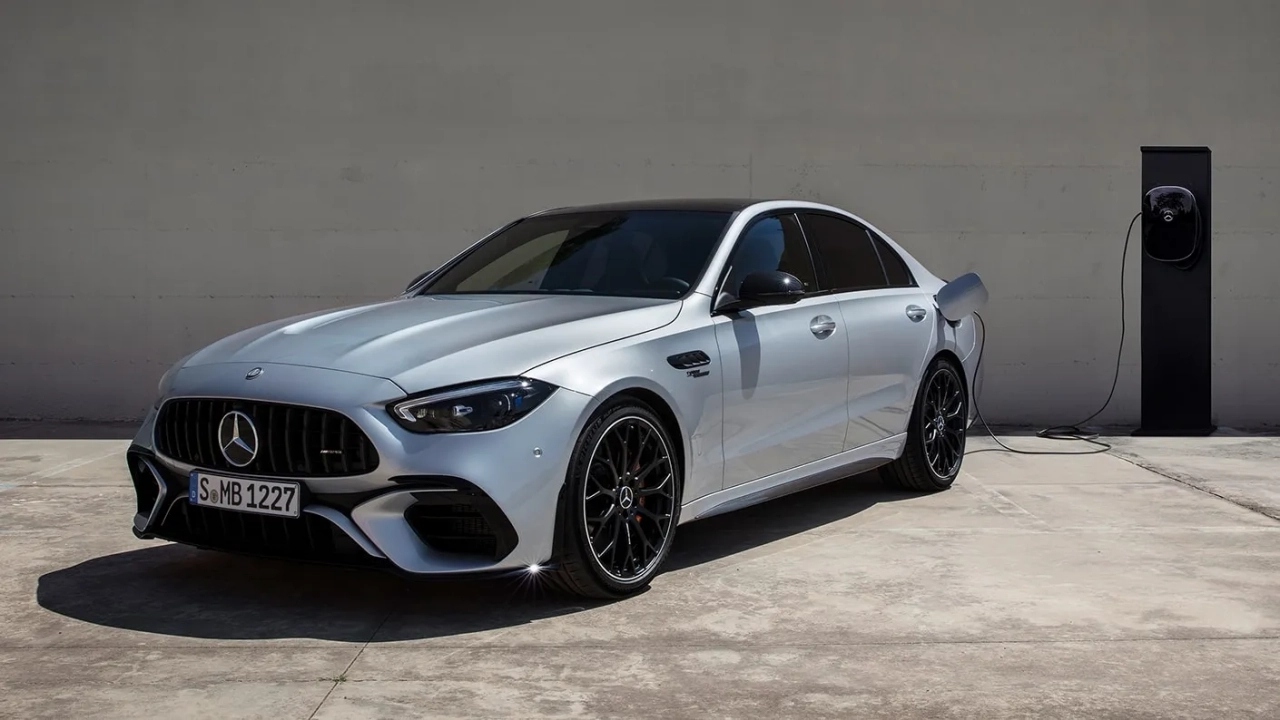
The 1986 Mercedes-Benz AMG Hammer is one of the most extraordinary sleeper cars in automotive history. On the surface, it looks like a regular W124 Mercedes sedan, a car known for its luxury and comfort. But under the hood, this “sensible” sedan was transformed into an all-out performance machine by AMG, Mercedes-Benz’s performance division.
Powered by a 5.5-liter V8 engine, the AMG Hammer produced an impressive 355 horsepower and 388 lb-ft of torque. This allowed it to accelerate from 0 to 60 mph in just around 5 seconds—a feat that put it ahead of many supercars of the time, including the Lamborghini Countach. Despite its power, the Hammer kept the same elegant and understated appearance as the standard W124, making it a perfect sleeper car.
What makes the AMG Hammer even more special is its rarity. While exact production numbers are unknown, it’s estimated that only 54 units were built. With prices today hovering around $140,000, it’s a rare gem in high-performance cars and remains a beloved collector’s item.
The Hammer’s understated looks, combined with its powerhouse engine, make it one of the most legendary “sleepers” in automotive history, blending luxury and performance in a way few cars ever could.
The Mercedes-Benz AMG line represents the pinnacle of high-performance engineering and luxury within the Mercedes-Benz portfolio. Known for its hand-crafted engines, exhilarating speed, and a perfect blend of performance and elegance, AMG vehicles have carved out a niche for themselves in luxury cars.
These cars are a step above the standard Mercedes-Benz models, offering a heightened driving experience with a focus on power, precision, and aggressive styling. The AMG badge signifies an uncompromising commitment to performance, with every model featuring advancements in technology and design that enhance the driving experience.
AMG’s origins can be traced back to the 1960s, when two Mercedes engineers, Hans Werner Aufrecht and Erhard Melcher, founded the company to specialize in racing engines.
Over the decades, AMG has grown from its roots as a performance tuning company into a full-fledged division of Mercedes-Benz, producing some of the world’s most powerful and luxurious vehicles. Today, AMG is synonymous with cutting-edge performance, and each car that wears the badge is built to deliver a thrilling and dynamic driving experience.
One of the hallmarks of AMG vehicles is their engines. Unlike mass-produced engines, AMG engines are meticulously hand-built by a single engineer following the “one man, one engine” philosophy. This craftsmanship is emblematic of AMG’s dedication to quality and precision. The engines range from turbocharged inline-fours to thunderous twin-turbo V8s, all designed to deliver impressive power and torque.
The AMG 4.0-liter twin-turbocharged V8, found in models like the AMG GT and AMG C63, is a prime example of this engineering excellence. It delivers explosive acceleration and a growling exhaust note that enthusiasts love, while still maintaining the refinement expected of a Mercedes-Benz.
The performance of AMG models is not solely due to their engines; the entire car is engineered for speed and agility. AMG cars come with specially tuned suspensions, aerodynamic enhancements, and high-performance brakes to ensure that the power is effectively harnessed and controlled.
The AMG Ride Control system, which adjusts the suspension based on driving conditions and modes, allows drivers to switch between a comfortable daily ride and a track-ready performance setup. The AMG Dynamic Select system offers various driving modes, from “Comfort” to “Race,” allowing drivers to customize the car’s responsiveness, shifting behavior, and handling characteristics.
The AMG line includes a wide range of vehicles, from compact performance sedans to full-sized SUVs, ensuring that there is an AMG model for every kind of driver. The C-Class and E-Class AMG models are some of the most popular in the lineup, offering a blend of everyday usability with track-worthy performance. The AMG C63, with its rear-wheel-drive layout and V8 engine, delivers sharp handling and explosive acceleration.
It’s a car that feels as comfortable on the track as it does on the highway. The E-Class AMG models, particularly the AMG E63 S, take things a step further, offering even more power along with a more refined, luxurious experience. The E63 S is a powerhouse, capable of going from 0 to 60 mph in just 3.3 seconds, all while providing a spacious, comfortable interior.
For those seeking the ultimate performance experience, the AMG GT lineup represents the pinnacle of what AMG can offer. The AMG GT is a purpose-built sports car with a front-mid-engine layout, offering near-perfect weight distribution for exceptional handling.
It’s available in various forms, from the AMG GT Coupe to the ferocious AMG GT R, which was designed with the Nürburgring in mind. The GT R’s advanced aerodynamics, lightweight construction, and 577-horsepower V8 make it one of the most aggressive and track-focused cars in the AMG lineup.
The AMG SUV lineup, which includes models like the GLE and GLC, brings performance to the luxury SUV market. These vehicles combine the practicality and versatility of an SUV with the heart-pounding performance of AMG engineering. The AMG GLE 63, for instance, features the same hand-built V8 found in other AMG models, but in a larger, more spacious package. It’s capable of delivering sports car-like acceleration while still offering the comfort and utility that SUV buyers expect.
One of the more recent innovations in the AMG lineup is the introduction of hybrid and electrified performance models, aligning with Mercedes-Benz’s push towards a more sustainable future. The AMG 53 models, which use a 3.0-liter inline-six engine combined with an electric motor, offer impressive performance while reducing emissions and improving fuel efficiency.
These mild-hybrid systems provide an extra boost of power when needed and allow for smooth, efficient driving at lower speeds. AMG’s future is clearly heading towards more electrified options, with the Mercedes-AMG EQS marking the division’s entry into the electric performance market. The AMG EQS brings AMG’s performance ethos to an all-electric luxury sedan, combining instant torque from electric motors with the refinement and comfort that Mercedes is known for.
In terms of design, AMG models stand out with their aggressive styling and aerodynamic enhancements. Larger air intakes, flared fenders, and quad exhaust tips are common features across the AMG lineup, giving the cars a more muscular, athletic appearance. AMG-specific wheels, body kits, and badges further differentiate these models from their standard Mercedes-Benz counterparts.
Inside, AMG models feature sportier interiors with carbon fiber, aluminum, and leather trim, along with performance seats and steering wheels designed for enthusiastic driving. The AMG branding is prominently displayed throughout the cabin, from the seats to the digital displays.
Despite their focus on performance, AMG vehicles do not compromise on luxury or technology. Each model comes equipped with the latest in Mercedes-Benz’s technology suite, including the MBUX infotainment system, which offers voice control, navigation, and smartphone integration. High-quality materials, comfortable seating, and advanced driver-assistance systems ensure that AMG models remain as luxurious and safe as they are fast.
Mercedes-Benz AMG vehicles represent the perfect union of luxury, performance, and cutting-edge technology. With a wide range of models to suit different needs, from sports cars to SUVs, AMG delivers a driving experience that is both thrilling and refined.
Whether you’re looking for a car that can dominate on the track or a high-performance daily driver, AMG models offer something for every enthusiast. The combination of handcrafted engines, advanced performance features, and luxurious interiors make AMG a top choice for those seeking a car that delivers on all fronts.
1)1986 Zimmer Quicksilver A Unique, Polarizing Sleeper
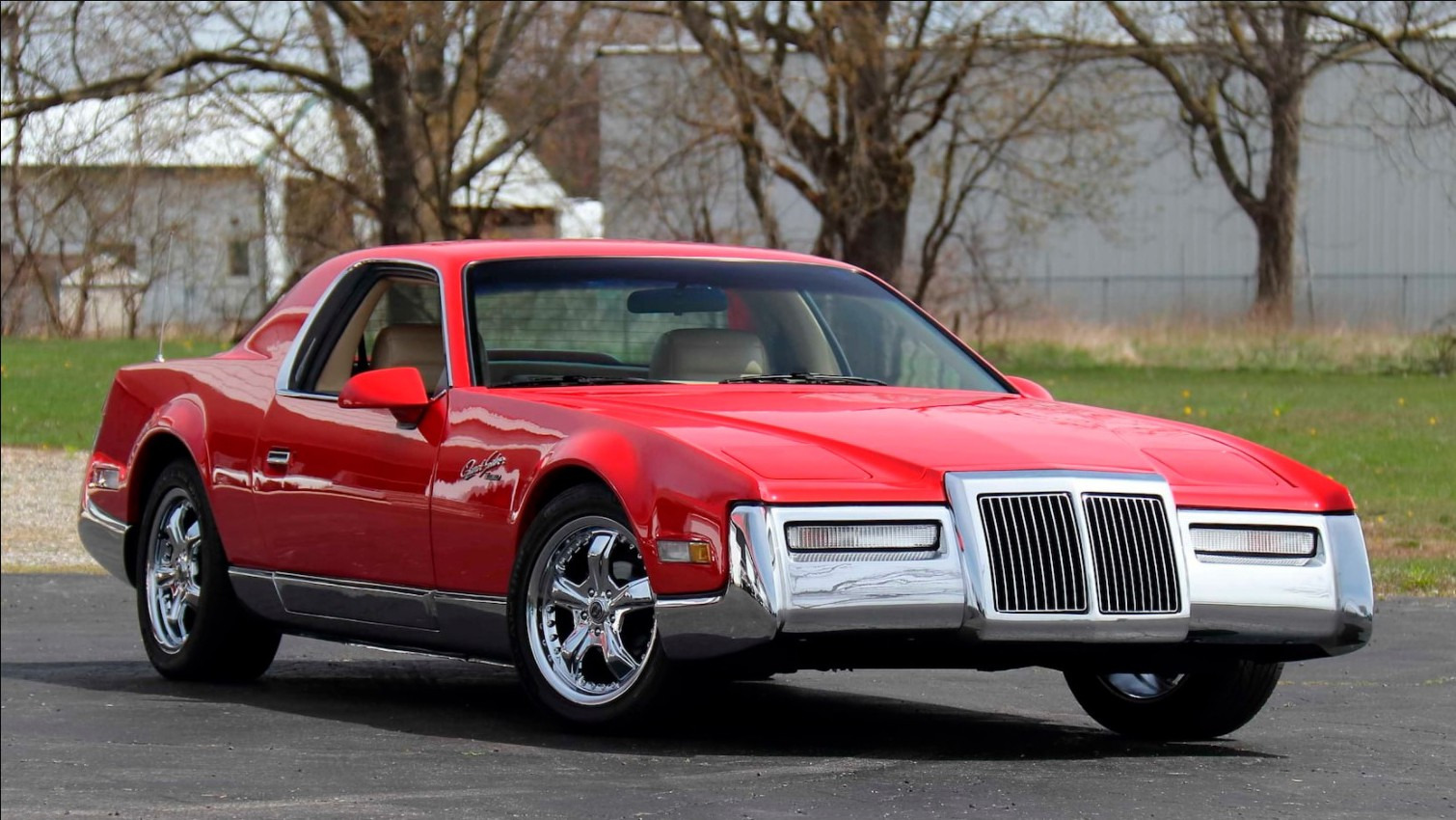
The 1986 Zimmer Quicksilver is undoubtedly one of the most unusual sleeper cars from the 1980s. Zimmer, a company known for its unique blend of restomods and custom creations, designed the Quicksilver to evoke the elegance of classic ’60s luxury cruisers while hiding the performance heart of a sports car underneath. It’s a strange combination, but one that made the Quicksilver a memorable and rare sight on the road.
Zimmer took the guts of a Pontiac Fiero—known for its sporty handling—and wrapped it in a body that resembled the luxurious cars of the past, like a late ’60s Buick or Oldsmobile. The Quicksilver was built with style and comfort in mind, complete with fancy trim and styling elements that mimicked classic high-end vehicles, but it didn’t shy away from performance either. Under the hood, it featured a 2.8-liter V6 engine, delivering 138 horsepower and 170 lb-ft of torque, which provided the car with enough pep for a surprisingly sporty drive.
Despite its performance potential, the Quicksilver was polarizing. Some people thought it was one of the ugliest cars of the ’80s, while others were drawn to its quirky blend of classic looks and sports car performance. Only 170 units were produced, making it a rare collector’s item today. The original price was around $48,000, but these days, you can find one for around $22,000 on the market.
In many ways, the Zimmer Quicksilver represents the oddities of the 1980s car market—an unusual combination of luxury and sports car vibes, wrapped in a strange and eye-catching design.
The Dodge Charger SRT is one of the most iconic American muscle sedans, blending raw power with everyday usability. As part of the renowned SRT (Street and Racing Technology) lineup, the Charger SRT offers an intoxicating mix of aggressive styling, exhilarating performance, and modern technology.
The car is deeply rooted in American automotive culture, combining a classic muscle car vibe with modern engineering. With its bold stance, powerful V8 engines, and performance-oriented features, the Charger SRT appeals to enthusiasts who want thrilling speed and a commanding presence on the road.
At the heart of the Dodge Charger SRT lies its soul: the engine. The SRT variants come equipped with different levels of performance, from the SRT 392 to the mind-blowing SRT Hellcat and its even more extreme Hellcat Redeye sibling. The SRT 392 features a naturally aspirated 6.4-liter HEMI V8, which produces 485 horsepower and 475 lb-ft of torque.
This engine provides a visceral experience, delivering strong acceleration and an exhaust note that is quintessentially muscle car. For those seeking even more adrenaline, the SRT Hellcat takes things to a whole new level with its 6.2-liter supercharged HEMI V8, producing an astonishing 717 horsepower and 650 lb-ft of torque.
The Hellcat Redeye pushes the limits further, offering 797 horsepower and 707 lb-ft of torque. These figures put the Charger SRT Hellcat models in supercar territory, and their straight-line speed is mind-boggling. The Hellcat can sprint from 0 to 60 mph in just 3.6 seconds, while the Redeye shaves off even more time, making it one of the fastest production sedans.
What sets the Charger SRT apart from its competitors is its ability to deliver this level of performance in a sedan body, making it practical for daily use. With seating for five and a spacious trunk, the Charger can accommodate both speed and practicality, a rare combination in high-performance vehicles.
The ride quality is surprisingly comfortable for a performance car, thanks to its adaptive suspension system, which can be adjusted depending on the driving mode. While the car’s weight and size might suggest a cumbersome driving experience, the Charger SRT manages to feel relatively nimble, especially in a straight line where it truly excels.
In terms of handling, the Charger SRT is not a track-focused machine like some of its European rivals. It’s more of a straight-line monster that feels at home on highways or drag strips. However, Dodge has equipped the SRT with a range of performance features to help it handle corners better than expected for its size. The Bilstein adaptive dampers allow drivers to switch between comfort and performance settings, stiffening the suspension for more spirited driving.
The wide-body variants, with their larger tires and wider track, further enhance grip and stability, particularly during high-speed cornering. However, its weight and rear-wheel-drive layout mean it can’t match the agility of lighter, more focused sports sedans. The Charger SRT thrives on raw power, and while it can handle twists and turns reasonably well, it’s clear that speed and straight-line performance are its priority.
The design of the Charger SRT is unmistakable, with an aggressive stance that commands attention wherever it goes. The front fascia is dominated by large air intakes and a menacing hood scoop, all of which are functional, designed to cool the powerful engine.
The wide-body variants have flared wheel arches, which house wider tires and give the car an even more intimidating look. At the rear, the Charger SRT features a large spoiler and quad exhaust tips that hint at its performance capabilities. The exterior design is muscular and bold, staying true to its muscle car roots while incorporating modern elements to keep it fresh.
Inside, the Charger SRT offers a mix of performance-oriented features and comfort. The cabin is spacious, with ample room for passengers, and it comes equipped with performance seats that offer excellent support during spirited driving. Leather and suede upholstery add a touch of luxury, while carbon-fiber and aluminum trim give the interior a sporty feel.
The Uconnect infotainment system is intuitive and easy to use, with an 8.4-inch touchscreen that supports Apple CarPlay and Android Auto. The system includes performance pages that allow drivers to monitor various aspects of the car’s performance, such as engine output, lap times, and G-forces. The car also offers a range of safety features, including adaptive cruise control, blind-spot monitoring, and rear cross-traffic alert, making it as safe as it is fast.
One of the key aspects that define the Charger SRT is its versatility. While it’s undoubtedly a high-performance machine capable of blistering speed, it’s also a car that can be used for everyday driving. The spacious interior, large trunk, and comfortable ride make it a practical choice for those who want a performance car without sacrificing usability. Whether you’re commuting to work or taking it on a weekend road trip, the Charger SRT can handle it all.
Fuel economy, as expected, is not the Charger SRT’s strong suit, particularly for the Hellcat and Redeye models. The supercharged V8 engines are thirsty, with the Hellcat averaging around 12 mpg in the city and 21 mpg on the highway. However, those who buy a Charger SRT are likely more interested in its performance credentials than its fuel efficiency. For those who want to enjoy the thrill of a supercharged V8 without worrying too much about gas mileage, the Charger SRT remains an enticing option.
When compared to rivals like the BMW M5, Mercedes-AMG E63, or Audi RS7, the Charger SRT offers a more visceral and raw experience. It lacks the refinement and high-tech features of its German counterparts, but it makes up for it with its character and sheer power. T
he Charger SRT is a throwback to the muscle cars of old, but with enough modern technology and comfort to make it a compelling option in today’s market. Its price point also makes it more accessible than many of its European rivals, providing tremendous value for the level of performance it offers.
The Dodge Charger SRT is a beast of a sedan that offers an unparalleled blend of power, practicality, and muscle car heritage. Its explosive acceleration, aggressive styling, and everyday usability make it a unique offering in the performance sedan market.
While it may not have the finesse or cornering ability of some of its European competitors, it delivers an unmatched driving experience for those who crave power and excitement. The Charger SRT is not just a car; it’s an experience, and for those who want to make a bold statement on the road while enjoying the thrill of American muscle, it’s hard to beat.

